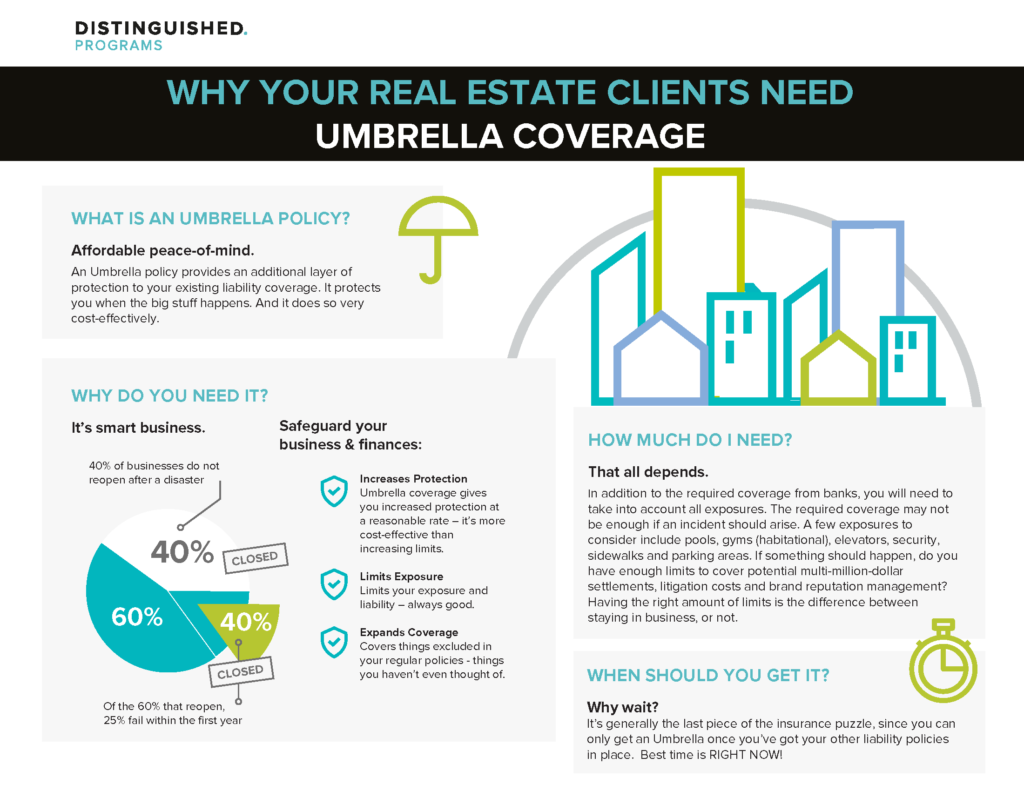Top 3 Real Estate Risk Exposures for Property Owners
What are the top risk exposures real estate property owners & managers face? The sources of top liability exposures for residential and commercial real estate include:
- sidewalks,
- parking lots and parking structures,
- pools,
- playgrounds, and
- elevators.
Slips and falls, drownings, and assaults and other security issues often result from negligent property maintenance, unprotected slip hazards, elevator or escalator malfunction, and inadequate security.
These real estate risk exposures apply to all types of properties whether residential, commercial, or mixed-use. When serious and catastrophic injuries, accidents, and even death occur, the financial consequences and reputational damage for a property owner can be devastating. This underscores the need for Real Estate Umbrella insurance coverage.
Slips & Falls
Sidewalks, parking lots and structures, lobbies, and all common areas present potential slip-and-fall hazards if not properly maintained. Proper risk-mitigation measures should be put in place.
Here are a few real estate risk exposures that should be part of the property owner/manager’s risk management program:
- Visible signs posted for wet floors inside the building
- Sanding and salting of driveways, walkways, etc. is done in advance of icy conditions
- Snow cleared from walkways
- Ice refreezing monitored by staff
- Common areas are well lit and maintained
- Potholes and uneven surfaces are monitored and repaired when needed
- Elevation changes such as steps, ramps, tire stops, and speed bumps are marked
Claims Example: A woman sued a mall in Texas after she slipped and fell in a puddle of water in the parking lot. She suffered neck, shoulder, arm, and back injuries and is unable to work. The lawsuit claims that the property owner of the mall was negligent for failing to ensure that the property was safe for visitors. She is suing for millions of dollars.
Pool Drownings & Accidents
Pool drownings and other accidents such as slips, trips, and falls are a significant exposure for habitational risks. Therefore, it is critical that the proper safety and management measures are implemented and adhered to in order to prevent both minor and catastrophic losses. These include:
- Providing signage or information regarding poolside safety
- Ensuring that all gates are self-closing and locking
- Installing sufficient non-slip surfaces around the pool and adequate lighting
- Properly sanitizing common items found in a swimming pool setting
- Limiting occupancy of enclosed spaces, such as locker rooms and washrooms
Claims Examples:
- Jury awarded $12.5 million to the family of a child who drowned in an apartment complex’s pool.
- Teenager became a paraplegic after he fell in the condo’s swimming pool area. The lawsuit filed by the child’s family resulted in a $20 million judgment.
Security
Elevator Security
Elevators in a building pose both safety and security risks. Loss-control measures to help ensure elevator safety and security include:
- Providing access to card readers and ensuring they are working properly to limit access within the building
- Having a regular elevator preventive maintenance program in place
- Addressing discovered and/or reported mechanical issues immediately
Claims Examples:
- Property owner of a commercial building was sued for more than $8 million after a young man was severely injured. The victim claimed the property owner did not observe all necessary safety hazards.
- Woman was attacked in an elevator of an apartment building. She sued the property owner for security negligence. The case is ongoing.
Parking Lot Security
Parking lots also pose security issues. Here are a few ways to mitigate parking lot risks:
- Proper lighting and visibility can help improve parking lot safety and reduce the risk of incidents. Keep an eye out for exterior lights behind buildings and near entrances
- Place dumpsters and recycling bins in well-lit areas as close to the building as possible
- Perform periodic maintenance checks, such as replacing burned-out or broken lights and ensuring that no trees or shrubs are blocking lighting fixtures
Next Steps
It’s important for property owners not only to review their own coverage, including their Commercial Real Estate Umbrella insurance to ensure adequate protection, but also to review their contractual agreements with third-party vendors in order to transfer certain liability risks for which the vendor is clearly responsible. In today’s highly litigious environment, it’s essential to have the right amount of limits to cover the property’s risks.
In addition, property owners should ensure their tenants carry the right coverage and limits.
Talk with a Distinguished sales executive to learn more about coverage options for your real estate clients.





